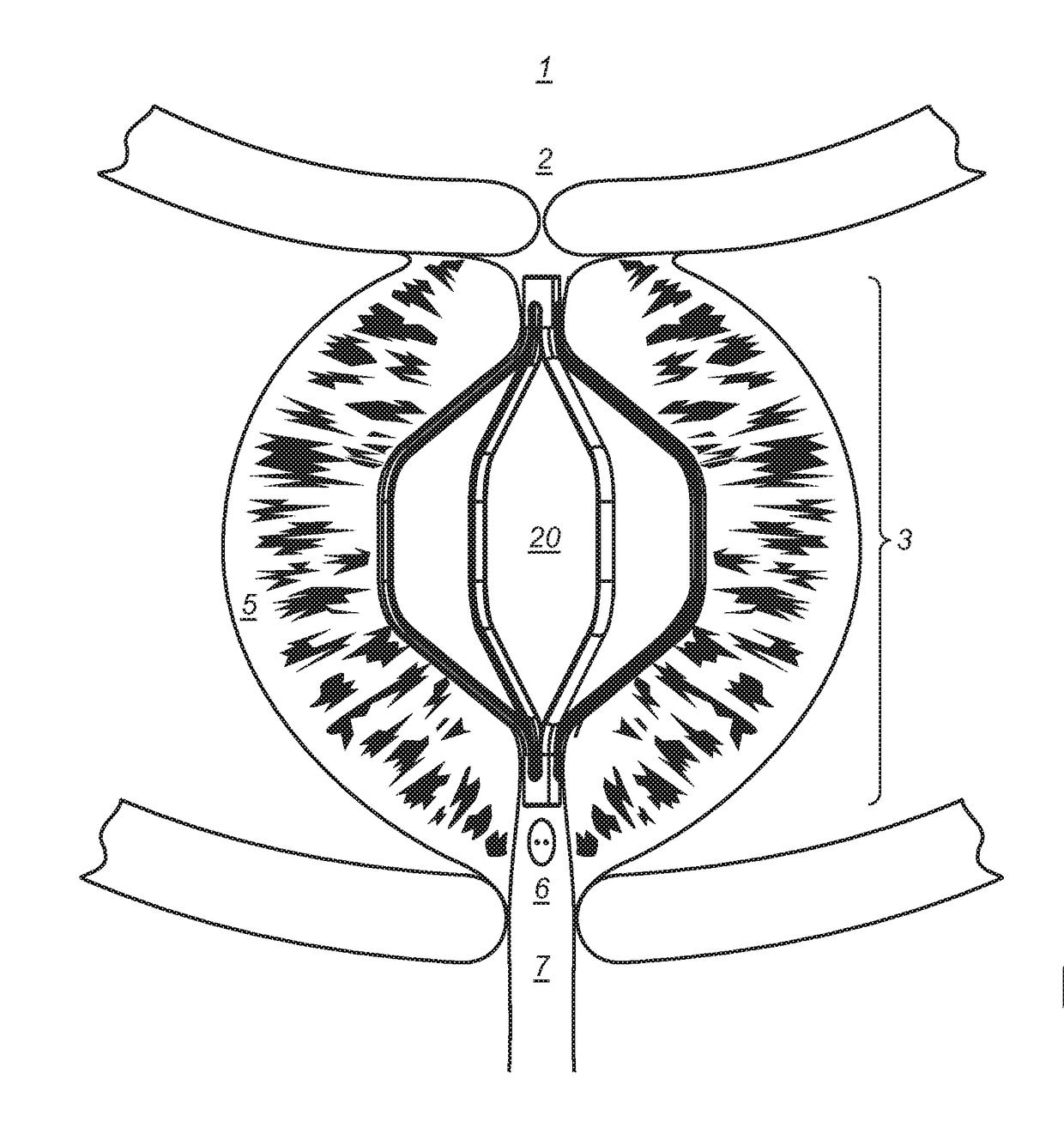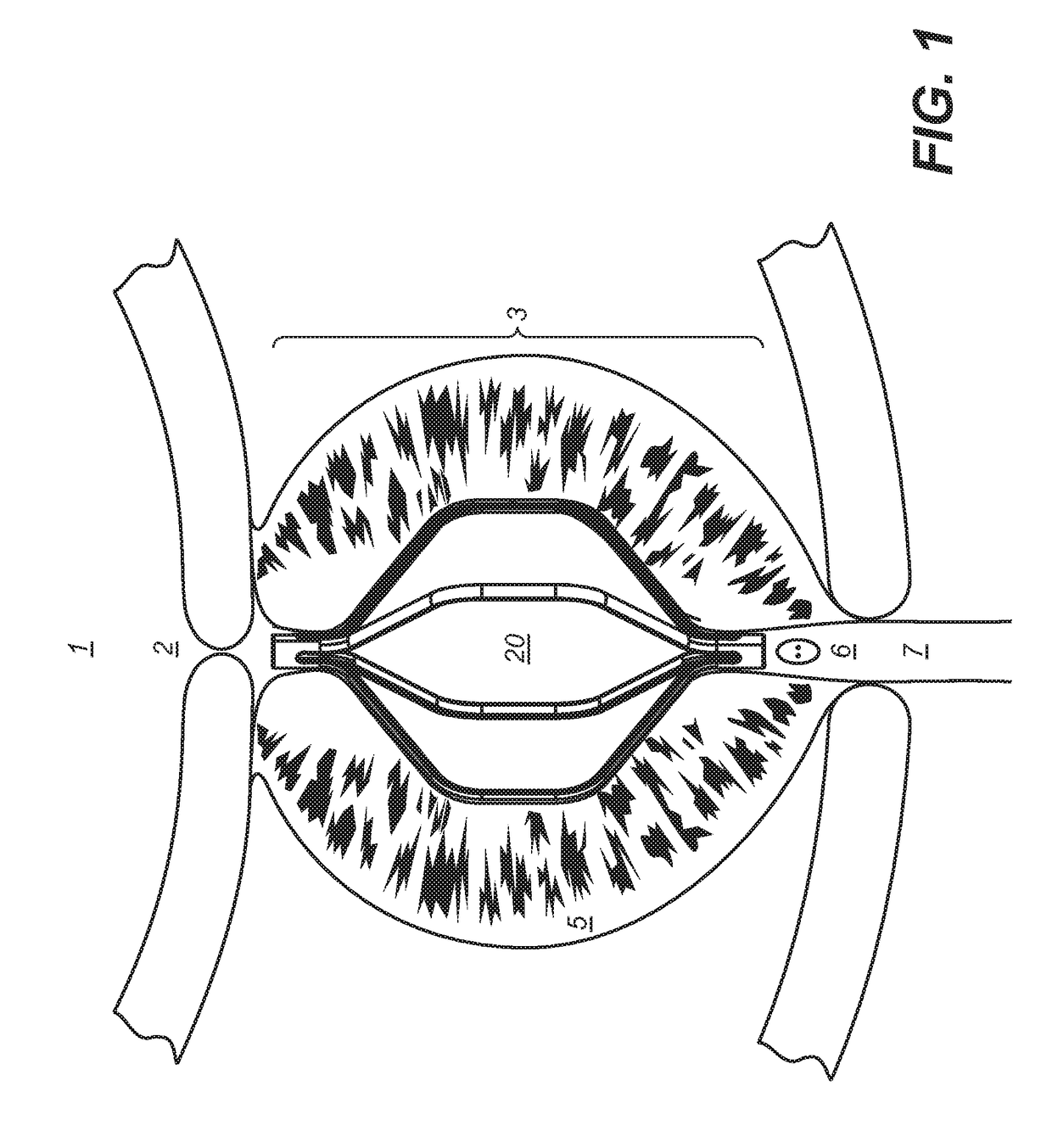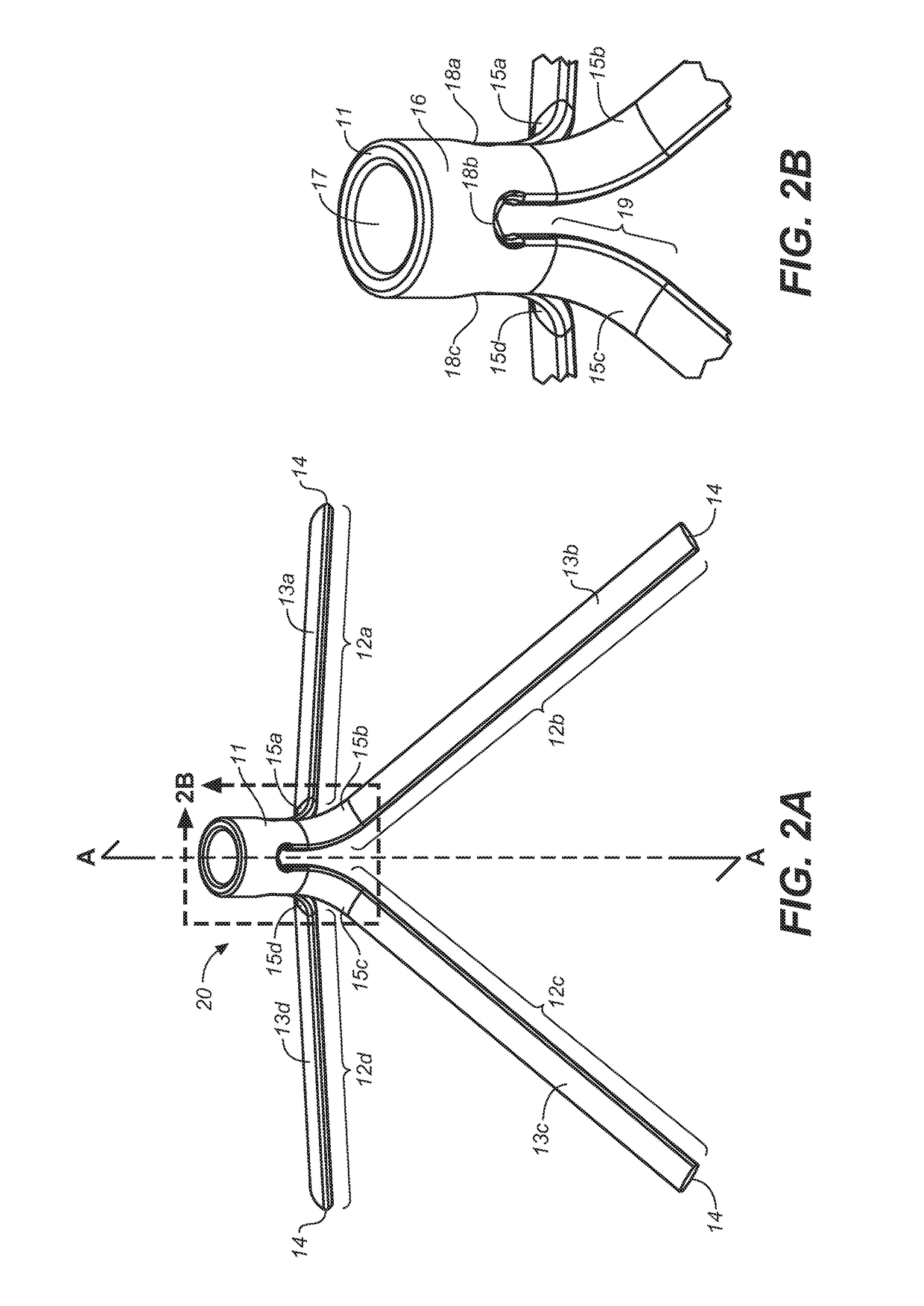Implantable devices and methods to treat benign prostate hyperplasia (BPH) and associated lower urinary tract symptoms (LUTS)
a technology of benign prostate and implantable devices, which is applied in the field of implantable devices and methods to treat benign prostate hyperplasia and associated lower urinary tract symptoms (luts), can solve the problems of many problems experienced, bph patients losing the ability to completely empty the bladder, and the thicker and weaker bladder wall of the prostate, so as to prevent inadvertent or misplaced deployment, prevent implant migration, and improve the accuracy of implant deploymen
- Summary
- Abstract
- Description
- Claims
- Application Information
AI Technical Summary
Benefits of technology
Problems solved by technology
Method used
Image
Examples
Embodiment Construction
[0048]Definitions: The terms “therapeutically effective displacement” or “therapeutically effective retraction” or “therapeutically effective expansion”, are used interchangeably herein and refer to an amount of displacement of prostatic tissue proximate to a restricted area of a urethra sufficient to increase the urethral lumen and treat, ameliorate, or prevent the symptoms of benign prostatic hyperplasia (BPH) or comorbid diseases or conditions, including lower urinary tract symptoms (LUTS), wherein the displacement of prostatic tissues exhibits a detectable therapeutic, prophylactic, or inhibitory effect. The effect can be detected by, for example, an improvement in clinical condition, or reduction in symptoms or absence of co-morbidities. Examples of clinical measures include a decrease in the international prostate symptom score (IPSS), reduction in post-void residual (PVR) volume of urine in the bladder after relief or increase in the maximum urinary flow rate (Qmax) or improv...
PUM
 Login to View More
Login to View More Abstract
Description
Claims
Application Information
 Login to View More
Login to View More - R&D
- Intellectual Property
- Life Sciences
- Materials
- Tech Scout
- Unparalleled Data Quality
- Higher Quality Content
- 60% Fewer Hallucinations
Browse by: Latest US Patents, China's latest patents, Technical Efficacy Thesaurus, Application Domain, Technology Topic, Popular Technical Reports.
© 2025 PatSnap. All rights reserved.Legal|Privacy policy|Modern Slavery Act Transparency Statement|Sitemap|About US| Contact US: help@patsnap.com



